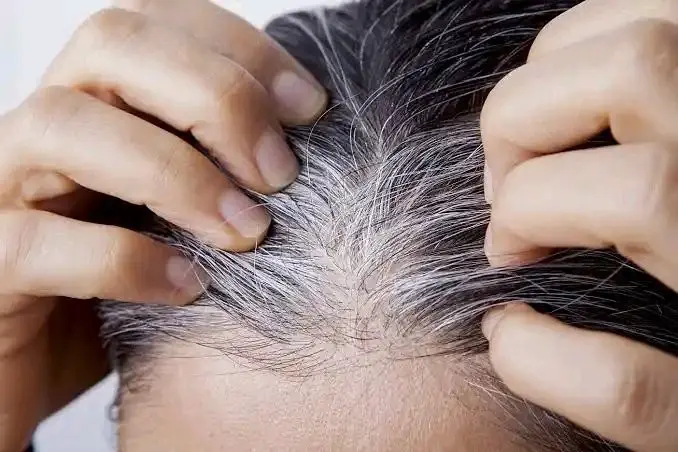Gray Hair: Hair color is an essential part of our appearance, and it plays a significant role in defining our identity.
The appearance of white or gray hair is typically associated with aging. However, it is not uncommon for individuals to experience the onset of white hair at a young age, leaving them curious and concerned.
According to healthline, This article aims to explore the various factors that can contribute to premature graying and shed light on this phenomenon.
Genetic Predisposition:
One of the primary reasons for the appearance of gray hair at a young age is genetic predisposition.
Our genes play a vital role in determining when our hair starts to gray. If your parents or close relatives experienced premature graying, there is a higher likelihood that you may experience the same.
Researchers have identified specific genes, such as the IRF4 gene, which regulates hair color, and defects or variations in these genes can contribute to premature graying.
Oxidative Stress:
Oxidative stress occurs when there is an imbalance between free radicals and antioxidants in the body.
Free radicals are unstable molecules that can cause damage to cells, including melanocytes, which are responsible for producing the pigment melanin that gives color to our hair.
When melanocytes become damaged or are unable to produce sufficient melanin, the hair loses its color and turns gray.
Factors such as exposure to pollution, UV radiation, smoking, and a poor diet can increase oxidative stress, leading to premature graying.
Nutritional Deficiencies:
A balanced diet rich in essential nutrients is crucial for maintaining healthy hair.
Deficiencies in certain vitamins and minerals can contribute to premature graying. Vitamin B12, for instance, is involved in the production of red blood cells and melanin.
A deficiency of this vitamin can affect melanin production, leading to the premature loss of hair color.
Similarly, deficiencies in other nutrients like iron, zinc, copper, and vitamin D can also play a role in the early graying of hair.
Autoimmune Disorders:
Certain autoimmune disorders can affect the pigmentation of hair, resulting in premature graying.
Alopecia areata, for example, is an autoimmune condition that causes hair loss in patches and can also affect the pigmentation of the regrowing hair.
In some cases, this condition can lead to the sudden onset of gray hair. Other autoimmune disorders, such as vitiligo, where the immune system attacks the melanocytes, can also result in the loss of hair color.
Chronic Stress:
Prolonged periods of stress can have a detrimental impact on our overall health, including our hair.
Chronic stress can disrupt the normal functioning of the body, affecting the hair follicles’ health and pigmentation. Stress hormones like cortisol can inhibit the production of melanin and trigger premature graying.
Additionally, stress can lead to behaviors like pulling out hair (trichotillomania) or excessive hair rubbing, which can damage hair follicles and cause hair to turn white prematurely.
Medical Conditions and Treatments:
Certain medical conditions and treatments can cause premature graying.
Thyroid disorders, such as hyperthyroidism or hypothyroidism, disrupt the body’s hormonal balance, affecting melanin production.
Additionally, chemotherapy and radiation therapy, commonly used in cancer treatment, can damage hair follicles and cause hair to grow back white or gray.
Other conditions that can contribute to premature graying include vitiligo, tuberous sclerosis, and Werner syndrome.
Conclusion:
The appearance of white hair at a young age can be a distressing experience, as it may challenge one’s self-image and societal expectations.
While it is natural for hair to turn gray with age, several factors can contribute to premature graying.
Genetic predisposition, oxidative stress, nutritional deficiencies, autoimmune disorders, chronic stress, and certain medical conditions and treatments all play a role in the premature loss of hair color.
Understanding the underlying causes of premature graying is essential for both individuals experiencing this phenomenon and the wider medical community.
Further research is necessary to explore preventive measures and potential treatments to delay or reverse premature graying.
In the meantime, maintaining a healthy lifestyle, managing stress levels, and addressing any underlying health issues are crucial steps towards promoting overall well-being and potentially slowing down the onset of white hair.
Remember, the color of our hair does not define our worth or beauty.


